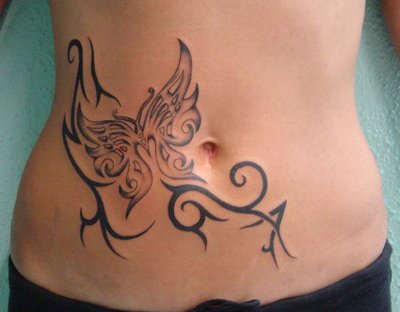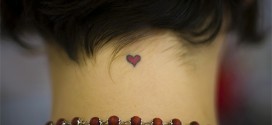Tattoos and body piercings have become increasingly prevalent in the U.S. — over 20% of adults are now tattooed. This number only will be increasing because 38% of millennials (born from 1981-1992) have tattoos, approximately half of whom have two or more, while 23% of millennials have body piercings.
 More of a concern for employers, however, is that visible body art is increasing as well. This trend may be at odds with the image that an employer wishes to convey to its clients and customers, particularly given the negative stereotypes associated with body art: studies reflect negative biases against individuals with tattoos which include assumptions that they are less intelligent and attractive, and more rebellious. Not surprisingly, 60% of human resources professionals reported that visible tattoos would have a negative impact on an applicant’s chance of being hired, and 74% said the same thing about facial piercings.
More of a concern for employers, however, is that visible body art is increasing as well. This trend may be at odds with the image that an employer wishes to convey to its clients and customers, particularly given the negative stereotypes associated with body art: studies reflect negative biases against individuals with tattoos which include assumptions that they are less intelligent and attractive, and more rebellious. Not surprisingly, 60% of human resources professionals reported that visible tattoos would have a negative impact on an applicant’s chance of being hired, and 74% said the same thing about facial piercings.
Other than a few locales prohibiting “personal appearance” discrimination (discussed below), there is no overt protection for employees with body art. However, employers should be wary of inflexible prohibitions on visible body art. This is not just another dress code issue.
Litigation based on disputes over body art has arisen principally in the context of religious discrimination. For instance, in one case, a member of the Church of Body Modification – which, unsurprisingly, considers piercing a religious act – alleged discrimination after her employer, a retailer, required her to either cover a facial piercing or replace it with a clear insert; the court found in the employer’s favor, holding that the proposed accommodations were reasonable given its interest in presenting a “neat, clean and professional image.” Similarly, Swartzentruber v. Gunite Corp. upheld an employer’s requirement that an employee cover an offensive religious tattoo – a “Fiery Cross” in support of the Church of the American Knights of the Ku Klux Klan – even though other employees displayed inoffensive tattoos. 99 F. Supp. 2d 976 (N.D. Ind. 2000).
In such accommodation cases, courts will closely examine the facts on a case-by-case basis. Thus, not all employers have been successful. For instance, in EEOC v. Red Robin Gourmet Burgers Inc., the court ruled in favor of the employee; there was no undue hardship in allowing an employee to continue working with a 1/4” religious tattoo on his wrist, given its size and that the employer hadn’t objected to it for six months prior to termination. 2005 WL 2090677 (W.D. Wash. Aug. 29, 2005).
While litigation based on other protected classes is far less common, employers should recognize that body art may relate to other protected classes. There is very real a disparity in who has body art – one study found that roughly 47% of Hispanic and 33% of African-American respondents had body art, both well above the national average. Thus, it is not hard to imagine that rigid policies against body art could disparately impact one or more protected classes.
Only a few local governments – including Washington, D.C.; Madison, Wisconsin; Santa Cruz, California; and Urbana, Illinois – currently prohibit discrimination based on “personal appearance,” which would include discrimination for visible body art. Yet, even there, courts have been deferential to employers defending claims of body art discrimination, so long as the employer can proffer a “reasonable business purpose” for the rule – such as to preserve the employer’s “conservative” image – and is flexible in accommodating the body art by permitting the employee to cover it. Sam’s Club, Inc. v. Madison EEOC, 668 N.W.2d 562 (Wis. App. 2003).
Employers need to think about this issue before it hits home.
First, blanket bans on body art should be avoided; limits on employees showing body art should be [A] based on more than a general aversion to body art (but a business plan to present a “neat, clean and professional image” in customer access jobs has been sufficient to date) and [B] flexible with options to offer reasonable accommodations to employees with visible body art – such as allowing them to cover the art – rather than taking an adverse action.
Second, any policy regarding visible body art should be consistently applied to avoid discrimination claims arising from disparate application, such as in a Massachusetts case where the employer prohibited women, but not men, from displaying tattoos.Hub Folding Box Co. v. Mass. Comm’n Against Discrim., 52 Mass. App. Ct. 1104 (Mass. App. Ct. 2001).
Finally, decision-makers need to be educated to be sensitive to body art’s significance not only to the wearer (which may reflect a religious symbol or an ethnic symbol) but also to observant co-workers. See, e.g., King v. ST Aerospace Mobile Inc., 2013 WL 2635926, at *19 n.35 (S.D. Ala. June 11, 2013)(African-American employee offered evidence of Confederate flag tattoo on white co-worker as one piece of evidence in his unsuccessful attempt to identify a pattern of racial harassment).
Jack London once said “Show me a man with a tattoo and I’ll show you a man with an interesting past.” But that was a hundred years ago. Today, show me an employee with a tattoo and I will show you a manager developing ulcers.
 Tattoo Fonts For Women and Women Tattoo Fonts Gallery For Men and Women
Tattoo Fonts For Women and Women Tattoo Fonts Gallery For Men and Women




